Accepted Scientific Name: Monsonia herrei (L. Bolus) F.Albers
S. African J. Bot. 62: 346 1996
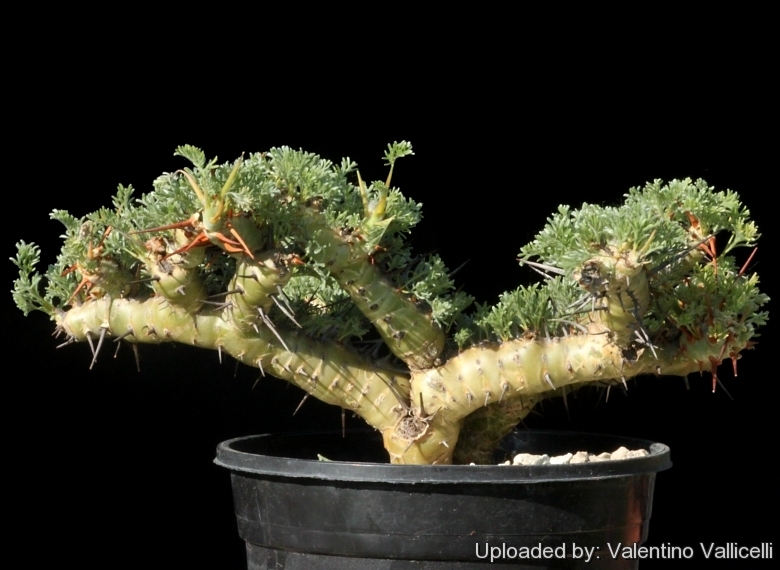
Sarcocaulon herrei (Monsonia herrei) Photo by: Valentino Vallicelli
Origin and Habitat: Distribution: Northern Cape (Namaqualand), Republic of South Africa.
Altitude: up to 610 m.
Habitat: Grows on arid quartz ridges mainly on the west and northern slopes of the mountains. The plants are frequent amongst fragments of white quartzite.
Synonyms:
Description: It is a dwarf perennial succulent shrub, branched, erect or semierect, 5-25 cm tall and aup to 35 cm in diameter, that resembles a small bonsai-tree.
Stem: Short, branching from the base, fat, armed with fearsome spines, branches about 1,2 cm in diameter with greyish-yellow bark.
Spines: The “spines” are the straight and thick persisting petiole of long- and short-petioled leaves.
Root: Fibrous, not swollen.
Leaves: Delicate, lamina 2-3 pinnatisect, finely divided, ferny-like, hairy, it is possible to distinguish two kind of leaves, long-petioled leaves 14-30 mm long and 12-19 mm wide and short-petioled leaves about 6-26 mm long and 6-15 mm wide. Also its leaves are nicely scented.
Flowers: 5 petaled, star-shaped about 2,5-2,8 cm in diameter. Petals white to pale-yellow as broad as long, Sepals with silky-hairy. Peduncle 3-9 mm long; pedicel pilose and tomentose, 11-28 mm long.
Blooming season: It flowers and produces seed throughout the winter and spring, flowers last for months.
Bibliography: Major references and further lectures
1) Albers F. “Monsonia” in:Urs Eggli “Illustrated Handbook of Succulent Plants: Dicotyledons” Springer Science & Business Media, 2002
2) Jean-André Audissou “The genus Sarcocaulon (De Candolle) Sweet (1826)” CACTUS-AVENTURES International N° 70
3) Moffett R. O. “The genus Sarcocaulon” in Bothalia Vol. 12, N°. 4 (1979) : 581-612.
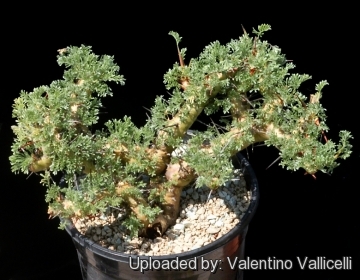 Sarcocaulon herrei (Monsonia herrei) Photo by: Valentino Vallicelli
Sarcocaulon herrei (Monsonia herrei) Photo by: Valentino Vallicelli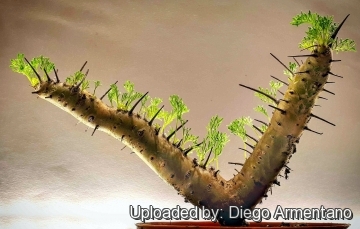 Sarcocaulon herrei (Monsonia herrei) Photo by: Diego Armentano
Sarcocaulon herrei (Monsonia herrei) Photo by: Diego Armentano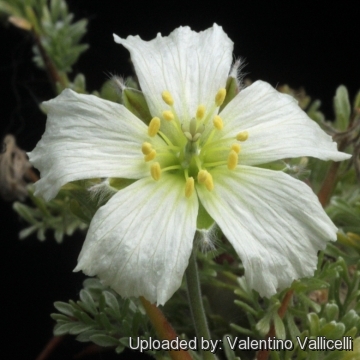 Sarcocaulon herrei (Monsonia herrei) Photo by: Valentino Vallicelli
Sarcocaulon herrei (Monsonia herrei) Photo by: Valentino Vallicelli Sarcocaulon herrei (Monsonia herrei) Photo by: Valentino Vallicelli
Sarcocaulon herrei (Monsonia herrei) Photo by: Valentino Vallicelli Sarcocaulon herrei (Monsonia herrei) Photo by: Valentino Vallicelli
Sarcocaulon herrei (Monsonia herrei) Photo by: Valentino Vallicelli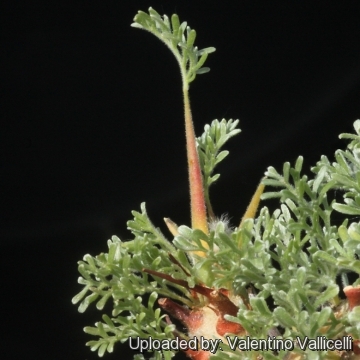 Long- and short-petioled leaves (Monsonia herrei) Photo by: Valentino Vallicelli
Long- and short-petioled leaves (Monsonia herrei) Photo by: Valentino Vallicelli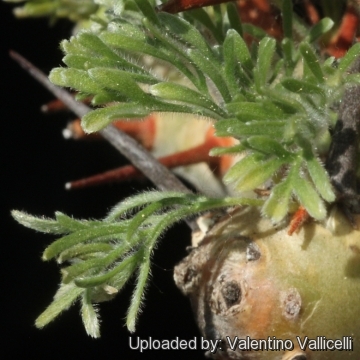 Sarcocaulon herrei (Monsonia herrei) Photo by: Valentino Vallicelli
Sarcocaulon herrei (Monsonia herrei) Photo by: Valentino Vallicelli Sarcocaulon herrei (Monsonia herrei) Photo by: Valentino Vallicelli
Sarcocaulon herrei (Monsonia herrei) Photo by: Valentino VallicelliCultivation and Propagation: Sarcocaulon herreiSN|22900]]SN|22900]] is a decorative plant which has the fame to be difficult to care properly in cultivation, however it is relatively easily grown species, very suitable for bonsai. Seed-grown plants thrive and flower prolifically in cultivation while imported specimens rarely produce an extensive new root system and flower sporadically, but survive for many years.
Exposure: They require direct sunlight when in full growth, while a filtered exposition is best during the hottest period of summer, when the plants enter in their dormancy phase. They always grow best in positions where they receive long periods of strong sunlight
Watering: They need to be regularly watered every 6 to 10 days whilst they are in active growth and and producing leaves, occasionally during dormancy. In cultivation it appear best not to let plants go into dormancy and to water year round. Nevertheless even in habitat the Sarcocaulons appear to be opportunistic and respond to precipitation events when they occur. As soon as the foliage starts to show signs of yellowing or withering, water should be withheld. It is very important that there is plenty of free air circulation around cultivated plants and also that they are not overwatered.
Soil: The ideal cultivation medium is very draining with at least 75% of pumice and lava grit.
Propagation: All Sarcocaulon species are readily grown from seeds. Seeds should be sown just under the surface of the soil, in large seed trays or plastic pots. They should be planted out into individual containers when they are about two years old. The most dangerous period for seedling is in summer. They need to be kept dry whilst dormant but at the same time their trunk do not withstand continual drought. The seedlings adapt to the climate where they are grown and develop a vigorous root system.
Your Photos
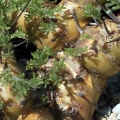
by Valentino Vallicelli




















